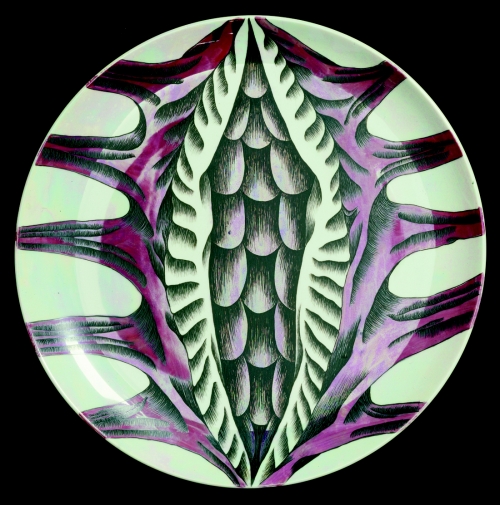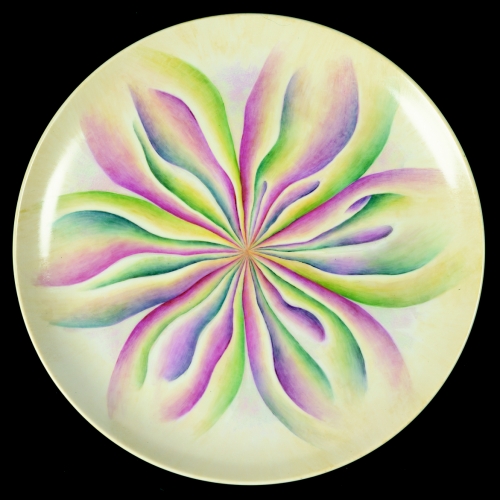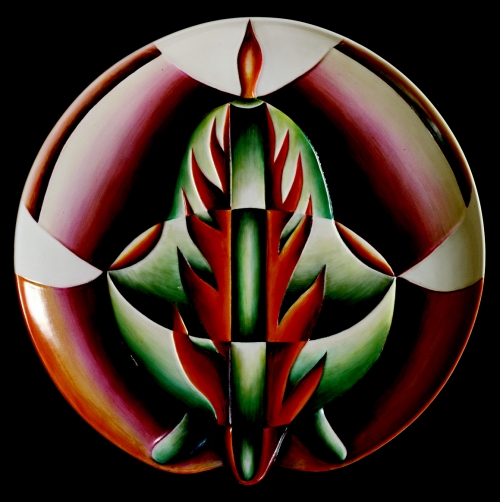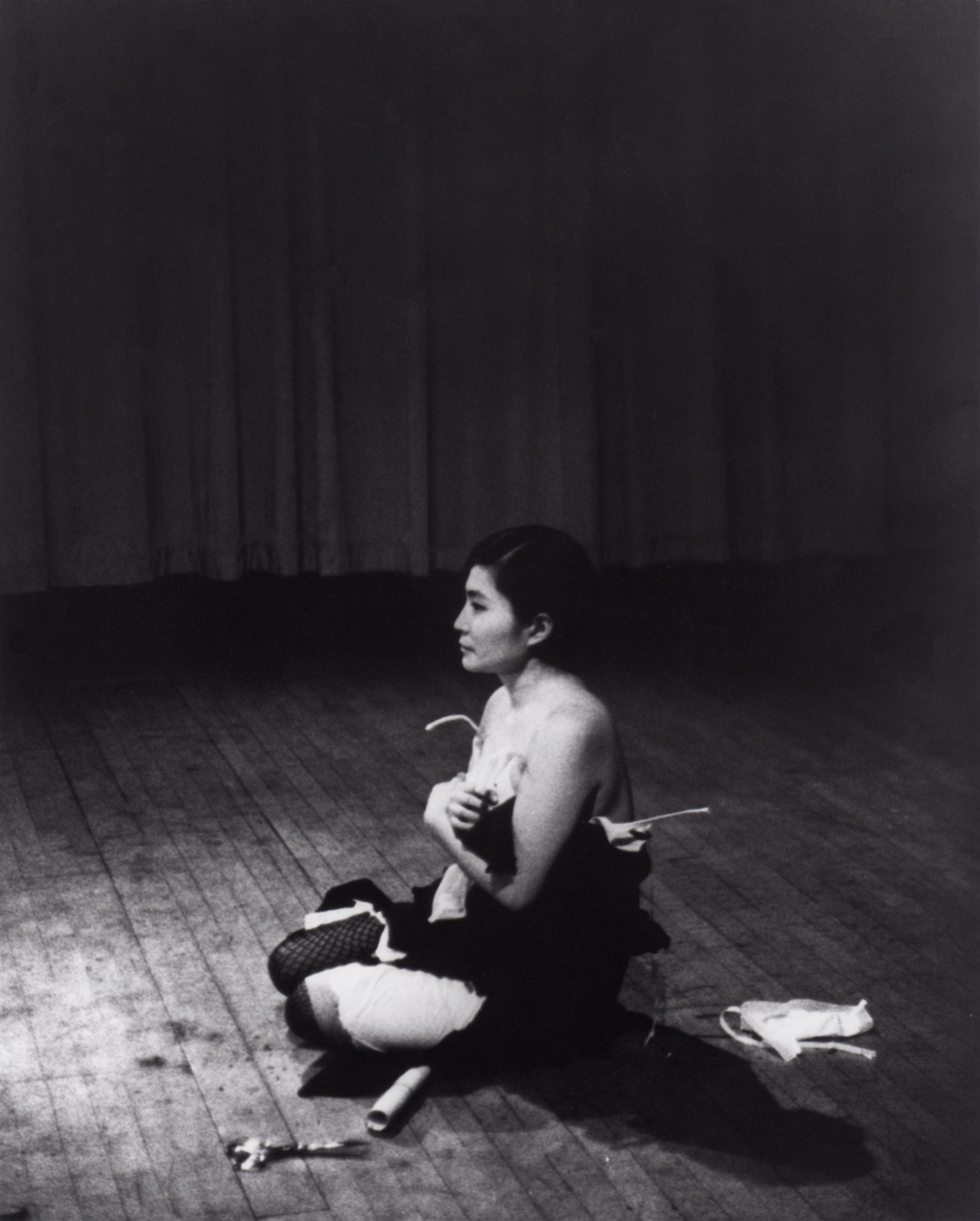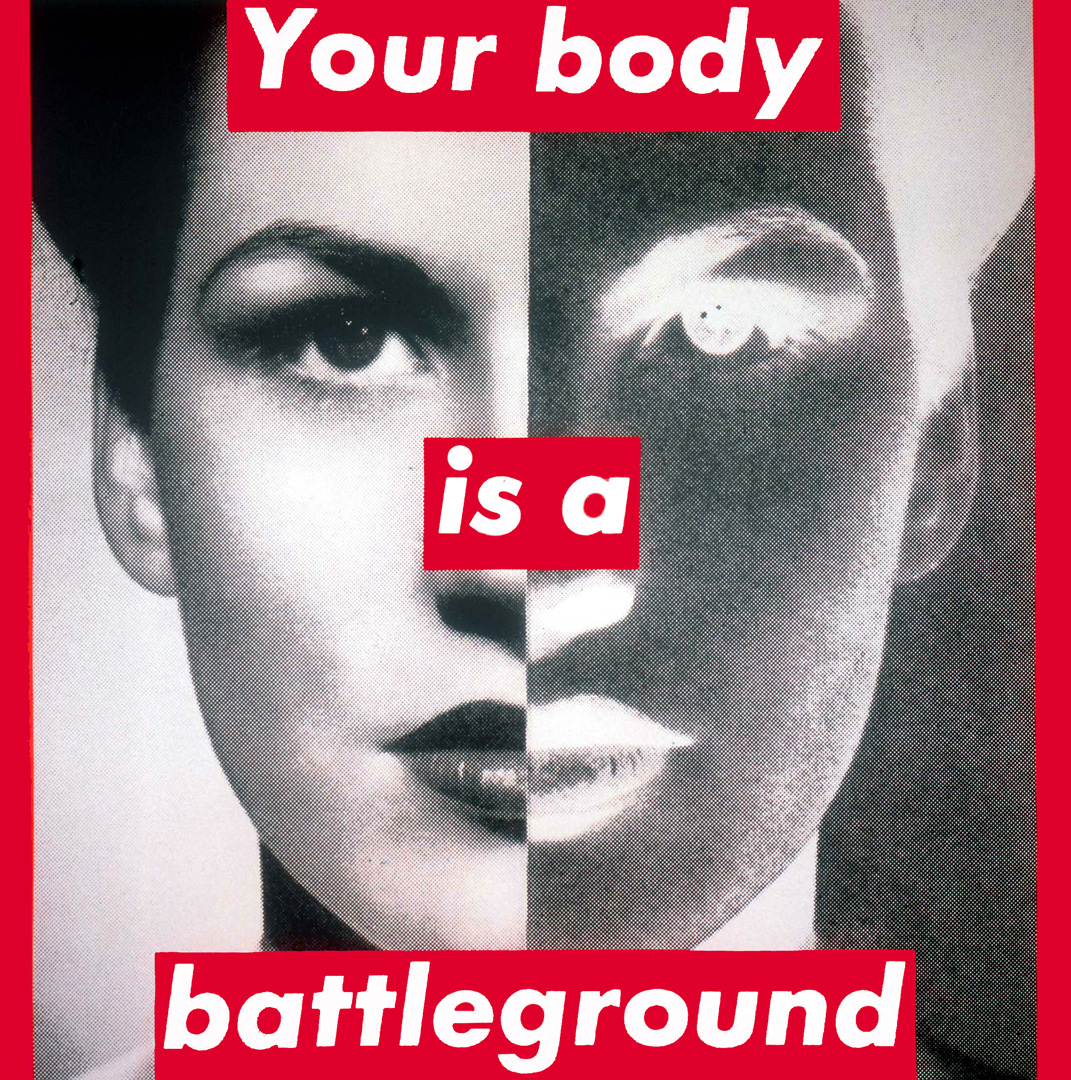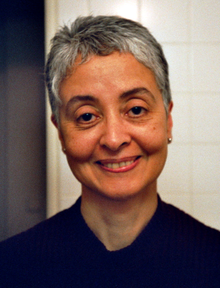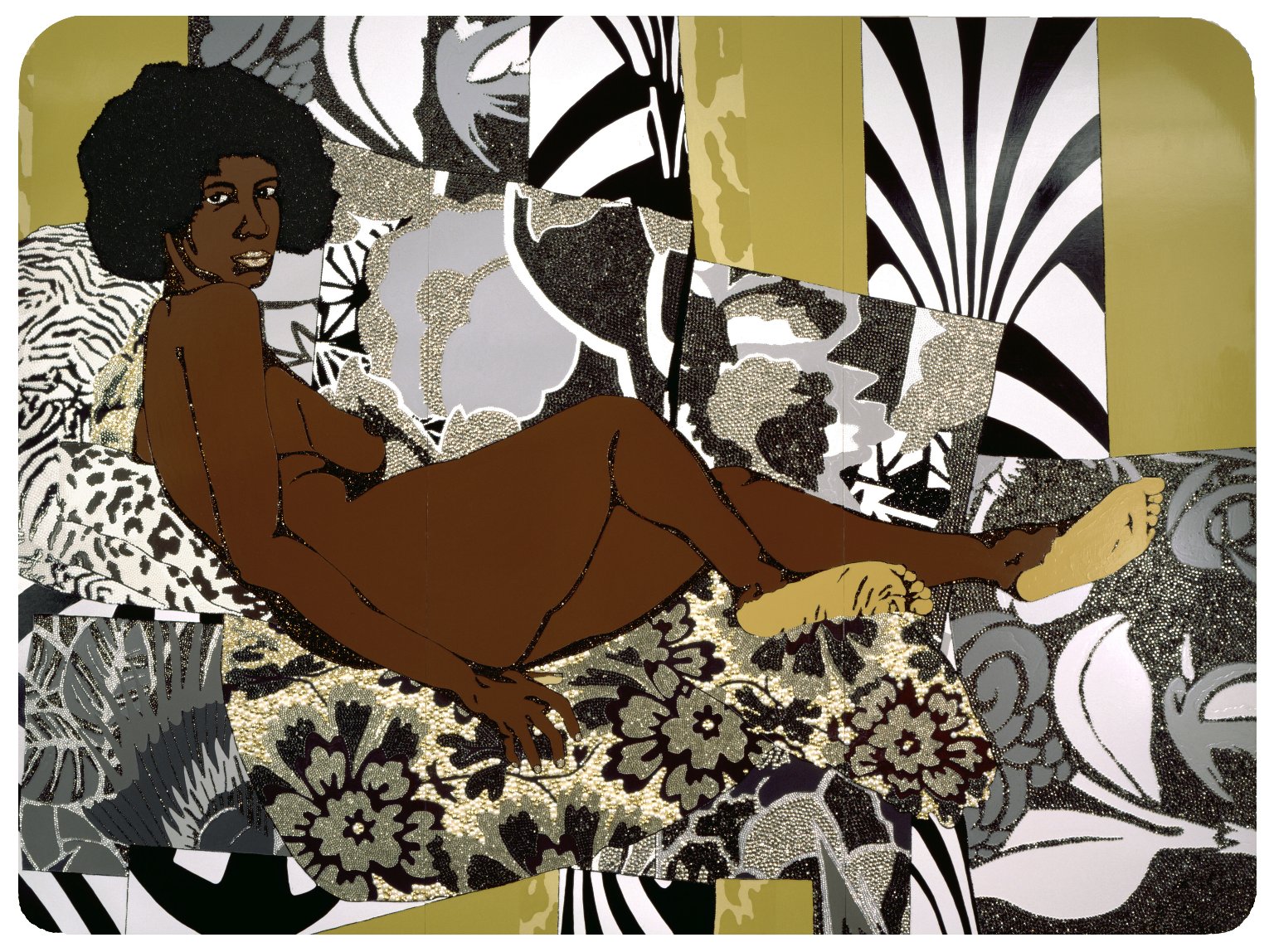Newark,
nicknamed “Brick City,” has given tremendous space to cultivate education such that
one may find several institutions within
ten blocks - such schools include Rutgers University, New Jersey Institute of
Technology, Essex County College, New Jersey Medical School, North Star
Academy, Science Park High School, American History High School, Newark Tech
High School, and Arts High School (opened in 1931 and was the first high school
in the United States specializing in Visual Arts). Besides being one of New
York City’s sisters, New Jersey’s largest metropolitan city is filled with
hidden treasures such as having the largest Cherry Blossom collection at Branch
Brook park, hosting the prominent Dodge Poetry Festival, and being home to the
Newark Museum. One overlooked aspect from this great city are the women artists coming from this city, and they cannot be ignored much longer.
Someone who passes by
McCarter Highway on a regular basis may have been shocked to see the
once
barren walls of the Amtrack retention area separating East Newark from the
highway be filled with colorful murals. The intersection at Pennington St and
McCarter Highway has the words “Invest in Our Youth” with an image of an elated
African American boy and similar joyful images of an African American family;
this particular mural was done by a male artist Akintola Hanif. Nonetheless, if
one were to drive onto McCarter Highway, one would realize that these beautiful
works are continuous and are signed by different artists. Newark is now home to
longest murals in the East Coast. Titled “Gateways to Newark: Portraits,” this mural stretches 1.39
miles (25 football fields). “Local curator Rebecca Jampol chose the 18
artists who painted Portraits,” 10 of whom are from Newark, were asked to illustrate something
related to Newark’s culture and heritage (Gorce 2017). These
artists worked from 8:00 PM to 5:00 AM for 13 days in May through the rain and
all while their canvases were lit by thirty-five stadium lights. The final
product was washed with anti-graffiti sealant to protect it.
 |
| "Newark Portal Flow" by Gera and Werc, 2017 |
|
|
“Hooded Warbler" by Gera Lozano, 2017
|
One of the artists who
worked on this was Gera Lozano along with another artist named Werc. Lozano was
raised in Newark but currently
resides in Brooklyn; her grammar school is two
blocks away from where the mural is created (Gorce 2017). Lozano’s mural titled
“Newark Portal Flow” illustrates Newark’s Lady Liberty – not to be confused
with Statue of Liberty. Newark’s Lady Liberty “represents the earth, the spirit
of flight and its creatures, like the cranes in the Passaic River” (Gorce
2017). The mural symbolizes “…the mind and the industries that shaped the city”
and “the lion in the center of the design is an homage to the
architectural ornaments of Penn Station” (Gorce 2017).
Lozano’s other works include murals
found in other inner-cities. Her work primarily features striking patterns and
designs – several of which feature birds and flowers. Even though her work does
not appear to be driven by political or social justice stance, according to Lozano,
her artwork is symbolic and the birds and flowers depicted in her murals
transcends what meets the eye. For instance, Lozano shares that her pieces like
“Hooded Warbler,” “represent and celebrate the natural fauna and flora of the local
area where the mural lives…they invoke freedom, focus, and having a higher
perspective” (Audubon 2017).
 |
| “42
Dresses” by Adrienne Wheeler, 2017 |
 |
"Lembranca/Resistencia-Memory/Resistance"
by Adrienne Wheeler, 2011
|
Another female artist who
worked on the “Gateways to Newark:
Portraits” is Adrienne Wheeler. Her work is titled “42
Dresses” and features white dresses side by side against a navy blue
background. Wheeler shared with reporter Tammy Gorce that the mural holds
sentimental values for her. Behind the mural, there are two streets – one of which
Wheeler’s paternal grandparents were born and later married in Newark in 1887. The
dress from her “mother’s grammar-school graduation in 1942 [inspired her]…[her] mother was from
Georgia, but she moved to Newark in 1938 as part of the Great Migration; the
dress, in its mural form, is now right under the very railroad tracks she
traveled to get here” (Gorce 2017). In contrast to Lozano, Wheeler’s
work revolves more around her race and her origins; the source of the dress and
her reasoning for choosing the dress for this mural hints at that. In 2011, Wheeler
hosted an one-woman show in Orbit One
Gallery (second floor of the Paul Robeson Galleries, Campus Center).
Her show was titled "Lembranca/Resistencia-Memory/Resistance"
and revolved around her struggles against oppression and an attempt to connect
with her ancestral African spiritual practice (Selman 2011).
 |
“Untitled (Your Gaze Hits
the Side of My Face)”
by Barbara Kruger, 1981
|
Moving on to the third female artist who was born in Newark to a working
class family and a product of Newark Public Schools (Hyman 764), Barbara Kruger
is a woman who broke barriers set for her – and has crashed that hypothetical
glass ceiling. Verging on the integration of Postmodernism and feminist thought
(Chadwick 385), Kruger’s works take on the male gaze as she uses the texts
that accompany her “blown-up, severely cropped photographs of women” (Chadwick
382) to shift the focus so that the individual displayed on her work may be
viewed as an individual, and thus destabilizing the view “of women as object[s]”
(Chadwick 382). One of her well-known artwork is the “Untitled (Your Gaze Hits
the Side of My Face)” from 1981. The word “gaze” is a very explicit nod
to the male gaze, and use of this word on the piece highlights – and places
shame to an extent – on the act of “gazing” at another human being and viewing her
as an object.
Kruger also works with other aspects of feminist artwork besides
 |
"Untitled (Pro-life for the
unborn, Pro-death
for the born) by Barbara Kruger, 2000 |
the male gaze. One example of this
would be the ongoing debate on abortion in America and her take on it. Published
in 2000, there is an image of George W. Bush with the words “Pro-life for the
unborn, Pro-death for the born.” Eight words are sufficient to understand the
hypocrisy Kruger is pointing out. Bush’s argument that he does not support
abortion (and is not willing to give women the right to decide what to do with
their own bodies) because he values life seems contradictory as he is a supporter
of capital punishment. Kruger’s work also addresses other issues faced by society today
such as the concept of consumerism. Her piece from 2007 titled “Face It” has
these words plastered on an image of material with the words “[t]his fantastic
outfit is ridiculously overpriced.” Kruger’s work illustrates the power of words
whether it be spoken or read and its impact are indisputable; she is able
to use them to address topics which concern her whether it be the male gaze,
abortion, or consumerism.
 |
| “OVER, the
rainbow” by Chakaia Booker, 2012 |
Looking into artists
involved in sculpture-making from Newark, Chakaia Booker stands out. She
attended Rutgers University and was a recipient of Guggenheim Fellowship of
Creative Arts. She started making large outdoor sculptures in the early 1990s. Booker
“fuses ecological concerns with explorations of racial and economic difference,
globalization, and gender by recycling discarded tires into complex assemblages”
(NMWA). According to the National Museum of Women in the Arts (NMWA), Booker uses
discarded tires in her work as references for industrialization, consumer
culture, and environmental concerns. Her sculpture from 2012 titled “OVER, the
rainbow” features tires stacked on empty milk gallons. “Booker slices,
twists, weaves, and rivets [the tires] into radically new forms and textures
[as] the varied tones of the rubber parallels human diversity, while the tire
treads suggest images as varied as African scarification and textile designs”
(NMWA). Akin to Wheeler, Booker also introspects into her roots for her
artwork, and a time period like that of postmodernism gives room for that to
occur.
Last but not least, Judith
Bernstein was also born in Newark. According to the Paul Kasmin Gallery,
 |
| “Money Shot – Green” by Judith Bernstein, 2016 |
Bernstein
“surged into art world prominence in the early 1970s with her monumental
charcoal drawings of penis-screw hybrids.” One of Bernstein’s work from 2016
titled “Money Shot – Green” was very relevant to the presidential election
happening that year. Trump’s name is placed on the slot machine between two Nazi
symbols. Next to the slot machine appears to be a phallic symbol of perhaps a penis
from which the word “shot” is being shot out. She has made multiple other paintings
related to Trump in a negative light and she used her artwork to serve as a
medium to express her point. Something that Bernstein has in common with the previous
four female artists is that they all used their work to address topics which
concerned them, and her artworks are reactive to activities around her.
This sums up the five
female artists from Newark! Nonetheless, there are many more female artists from
Newark – some of whom were not born here but spent a substantial amount of
their life here. Artists like these, especially those who are active in Newark such as
Lozano and Wheeler, adds to the rich culture of Newark and allows for the greatness of Newark to flourish.
By Maisha Manzoor
Citations:
Audubon.
“Hooded Warbler by GERALUZ.” Audubon, 25
Oct. 2017,
www.audubon.org/news/hooded-warbler-geraluz.
Chadwick, Whitney. Women, Art,
and Society. Langara College, 2016.
Gorce, Tammy.
“Newark Mural Showcases Brick City's True Colors.” New
Jersey Monthly, 19
Jan. 2017,
njmonthly.com/articles/arts-entertainment/newark-mural-showcases-city-true-colors/.
Hyman, Paula E., Moore, Beborah Dash. 1998. Jewish Women
in America. An Historical
Encyclopedia.
New York, NY: Routledge. Sponsored by The American Jewish Historical Society.
NMWA.
“National Museum of Women in the Arts.” Chakaia
Booker | National Museum of
Women in the Arts, nmwa.org/explore/artist-profiles/chakaia-booker.
Selman,
Carol. “Adrienne Wheeler: Keeper Of The Flame.” Newark,
NJ Patch, Patch, 31 Dec.
2011,
patch.com/new-jersey/newarknj/adrienne-wheeler-keeper-of-the-flame.


